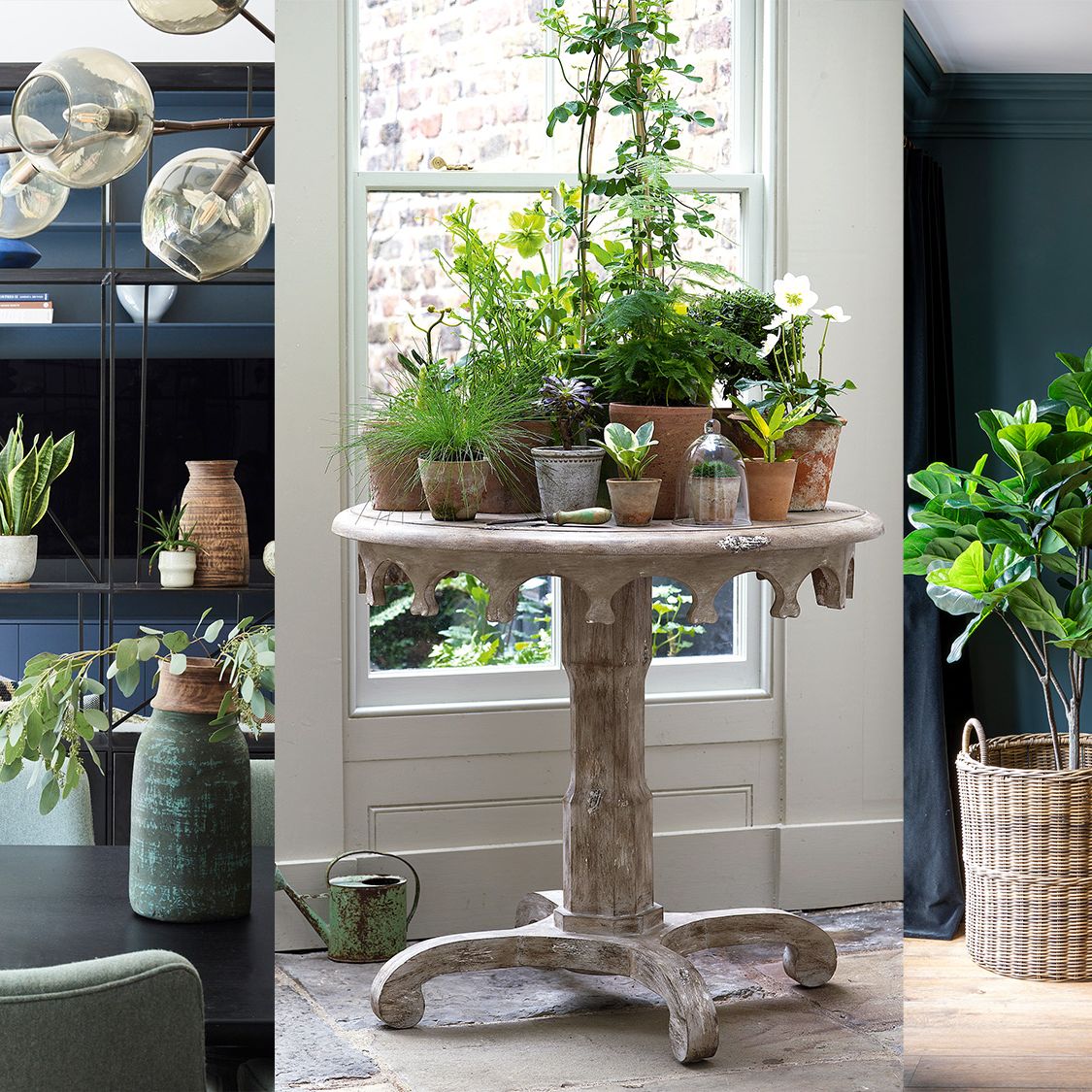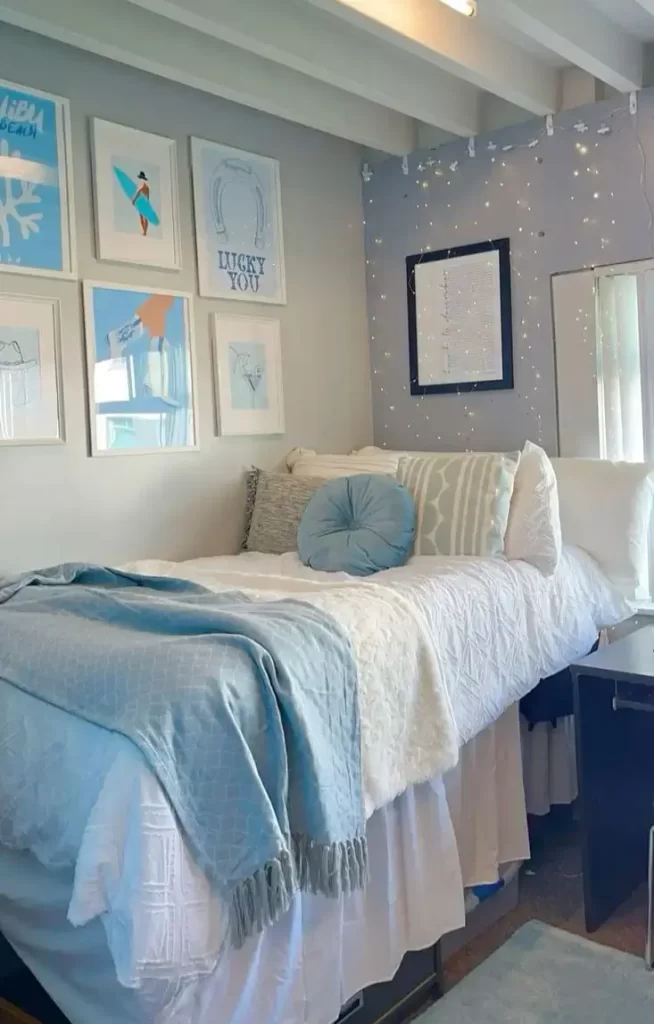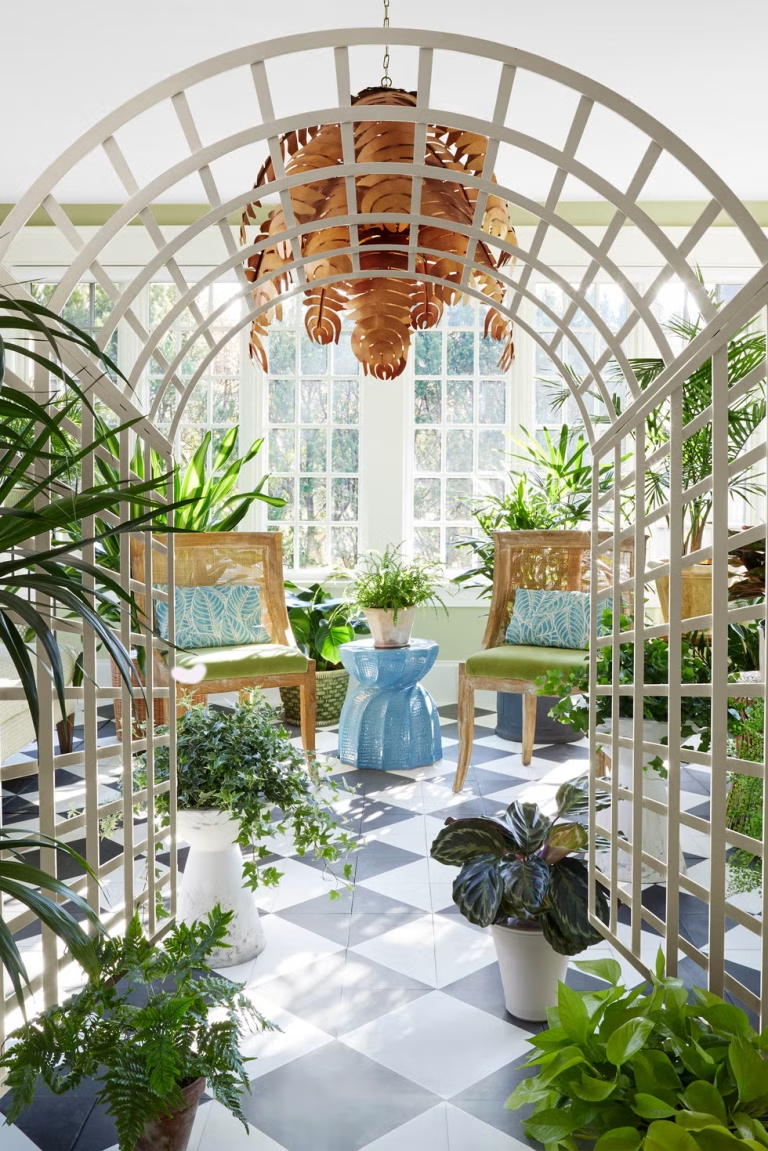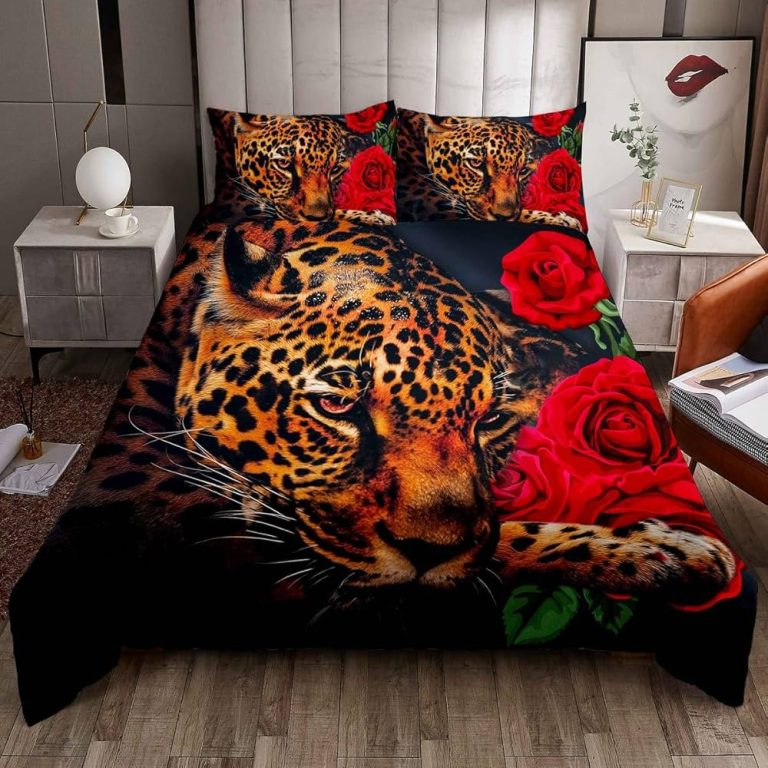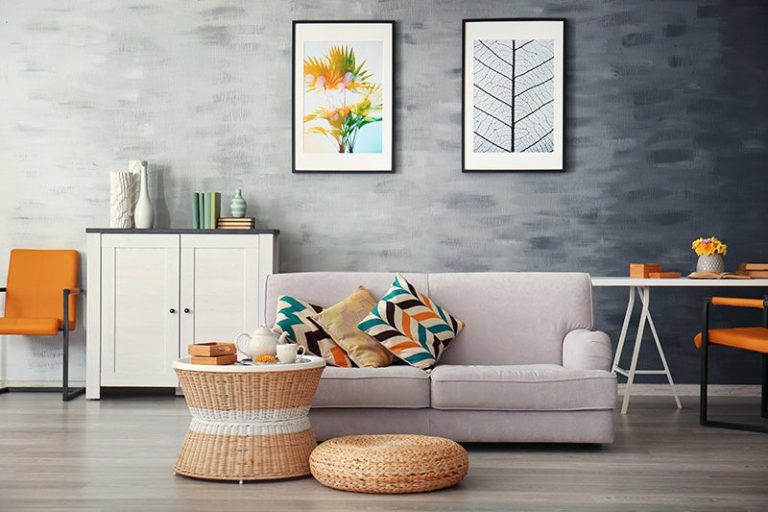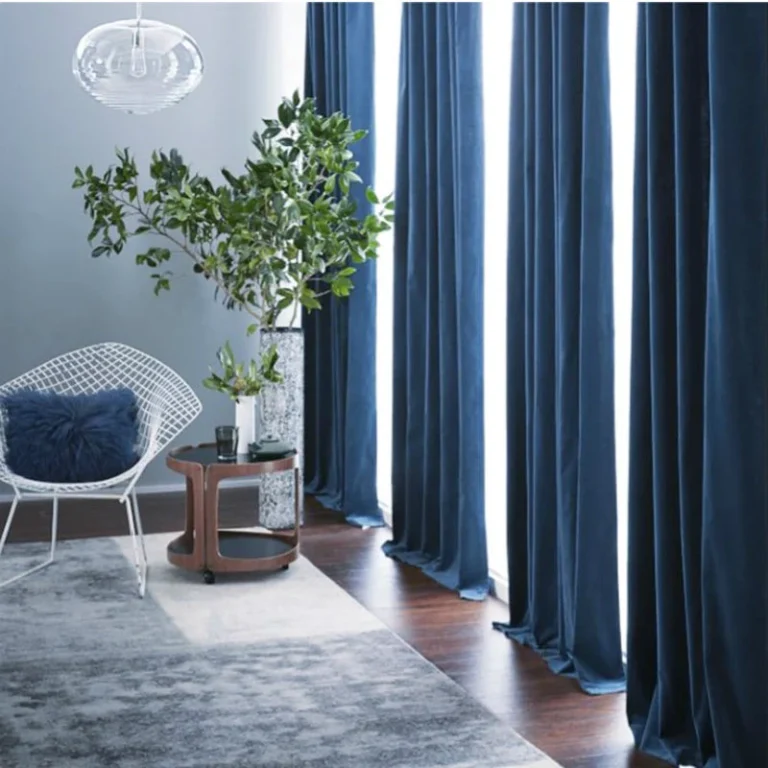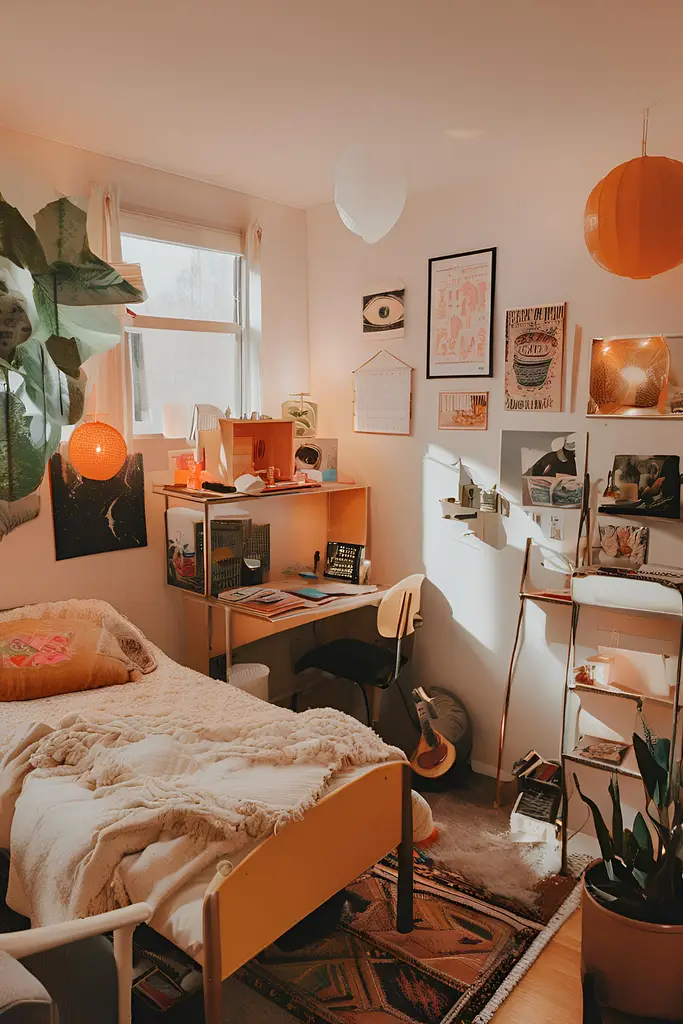15 Indoor Plants Styling Ideas to Elevate Your Home Decor
Indoor plants are more than just beautiful additions to your home—they create a peaceful atmosphere, boost your mood, and improve air quality. Styling plants indoors can bring out the best in your space, whether you’re designing a cozy nook, enhancing your living room, or even adding charm to your bathroom. In this guide, we’ll explore 15 creative ways to style indoor plants in your home to make your space feel fresh, vibrant, and full of life.
1. Hanging Planters for a Floating Green Space

Source
Hanging planters are a fantastic way to add a dynamic element to your indoor garden. By elevating plants off the ground, you create visual interest and a sense of height in your space. The best part? Hanging planters work in virtually any room, from kitchens to living rooms and even bathrooms.
To make a statement, choose large, cascading plants such as pothos, English ivy, or string of pearls. These plants naturally grow downward, creating a beautiful, flowing effect that works well in hanging baskets or modern macramé planters. Try grouping several hanging planters together at different heights to create a floating garden that draws the eye upward.
Hanging planters are particularly ideal for homes with limited floor space, as they help keep the area feeling open and uncluttered. Whether you have a small apartment or a spacious house, these plants can add a natural, bohemian flair to your interior design.
2. Stylish Plant Stands for Added Dimension

Source
Plant stands are an excellent way to showcase your favorite houseplants while adding an element of design to the space. You can find plant stands in various materials such as wood, metal, or ceramic, so there’s a style for every aesthetic.
Wooden plant stands work beautifully with plants like snake plants or ferns, especially when paired with rustic or mid-century modern furniture. If you prefer something more minimalist, sleek metal stands in gold or black can complement plants like succulents or peace lilies, which have striking leaves and require less water.
Adding plant stands to your decor helps create levels within a room, which gives the space a sense of balance and depth. Vary the heights of the stands to create visual intrigue—this layering effect makes your plants feel like a deliberate part of the interior design, rather than just an afterthought.
3. Greenery on Floating Shelves
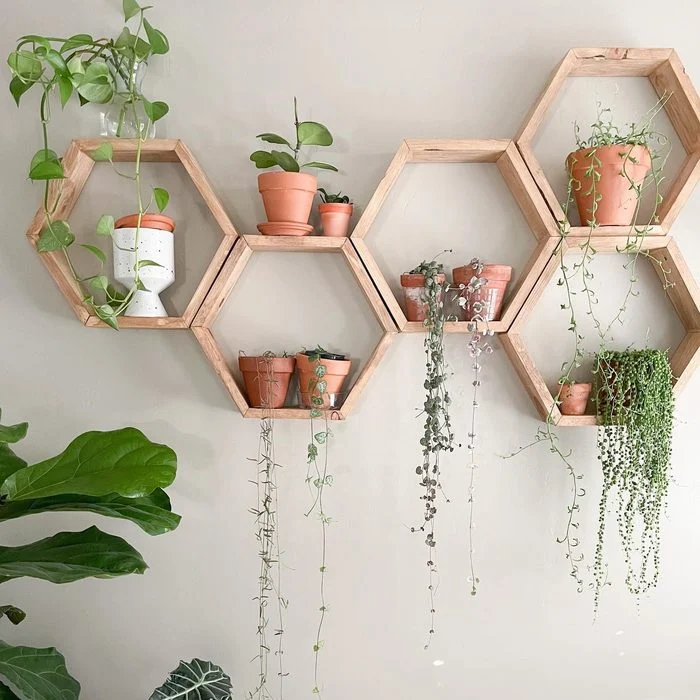
Source
Floating shelves are an easy and stylish way to bring greenery into your home. By placing plants on shelves, you can create a plant wall or a mini indoor garden that doesn’t take up much space.
Small, low-maintenance plants like succulents, cactus, or air plants work well on floating shelves. You can also combine plants with decorative items like books, vases, or candles to create a more cohesive, styled look. Arrange your plants in a way that complements the room’s overall color scheme—pair green plants with neutral tones for a soothing effect, or use vibrant, colorful pots to add personality to the space.
When styling plants on floating shelves, keep in mind the lighting conditions. Succulents, for instance, need bright light, while ferns and pothos do well in moderate to low light. Choose your plants according to the natural light available in each area to keep them healthy and thriving.
4. Vertical Gardens for a Space-Saving Green Oasis
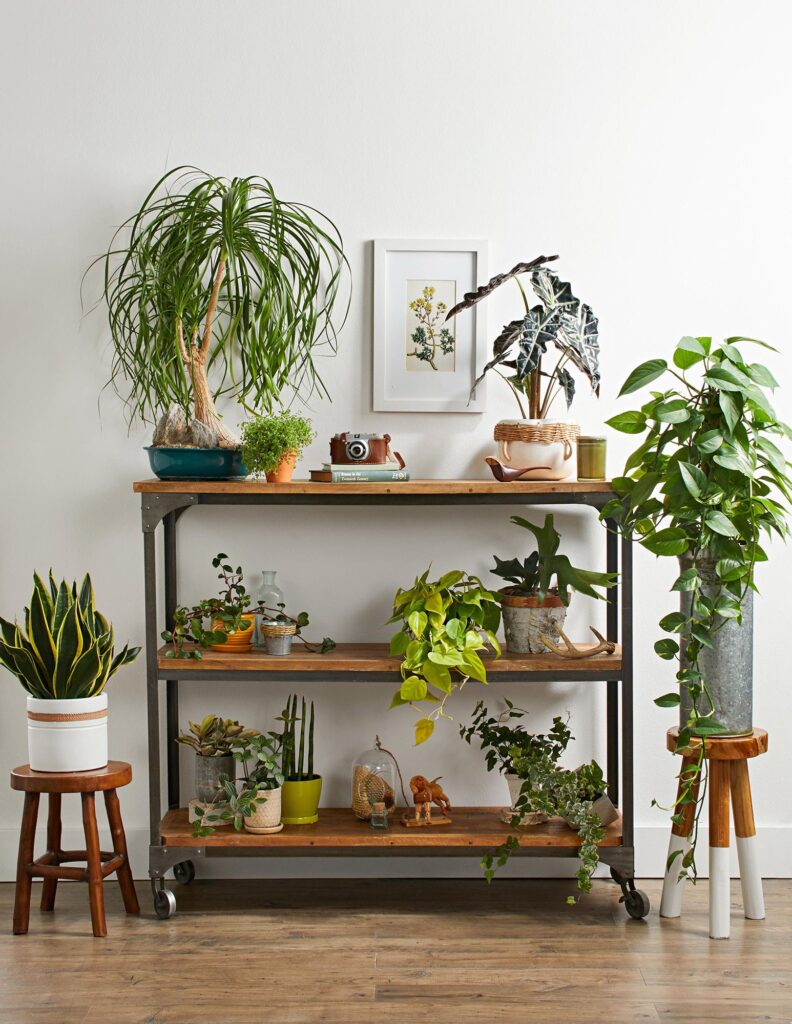
Source
Vertical gardens are an excellent solution for homeowners looking to maximize their green space in small areas. These garden systems use the vertical space on your walls to create a stunning, lush display of plants.
Consider using a vertical plant stand or creating your own DIY vertical garden by attaching multiple planters to a wall or frame. Plants like ferns, ivy, or philodendrons are perfect for vertical gardens because they can thrive in small spaces while providing plenty of greenery. This is a particularly great option for narrow spaces like corridors, bathrooms, or balconies.
A vertical garden offers a unique way to display your plants and can act as a focal point in your room. It’s also a great way to incorporate more greenery into your home without using up valuable floor space, making it perfect for apartment dwellers or those with limited square footage.
5. Statement Pots and Planters for a Stylish Touch
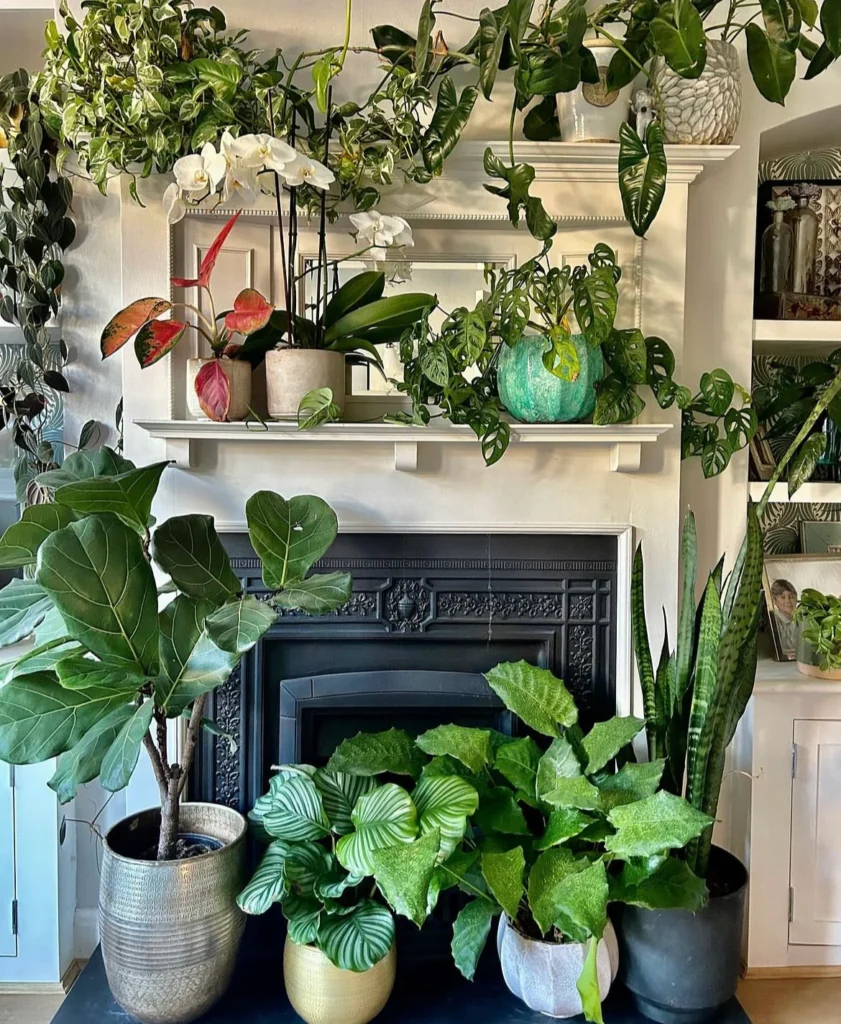
Source
The pot or planter you choose for your indoor plants can dramatically change the vibe of your space. Bold, colorful planters can create a statement piece, while neutral or minimalist planters can blend seamlessly into the background, allowing the plants to take center stage.
When selecting a planter, consider the material, color, and size. Concrete or ceramic pots work well in modern or industrial spaces, while wicker or terracotta pots add a rustic or bohemian feel. If you’re working with a more modern aesthetic, geometric planters in metallic or matte finishes can add a touch of sophistication.
Pair statement planters with plants that have bold, sculptural shapes, like rubber trees or fiddle leaf figs. The combination of an eye-catching planter and a dramatic plant can create a visual focal point in your home, whether placed in your living room, entryway, or bedroom.
6. Plants in the Bathroom for a Natural Retreat
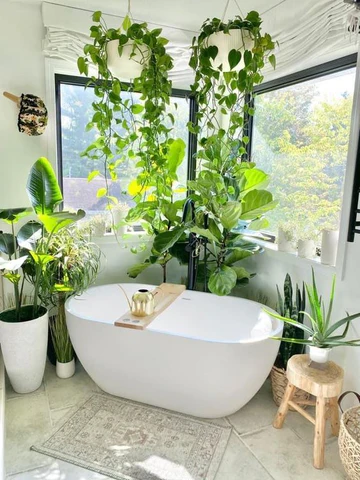
Source
Bathrooms are the perfect place for certain plants to thrive due to the humidity levels, making them ideal for creating a spa-like atmosphere. Ferns, peace lilies, and orchids love the moisture-rich environment of bathrooms, so they can flourish with minimal effort.
When styling plants in the bathroom, consider placing them near windows for optimal light. If you don’t have a lot of natural light, choose low-light plants like snake plants or pothos that can tolerate less sunshine. A great idea is to group a few plants together on a countertop or windowsill, or hang them in a corner for a more tropical, luxurious feel.
Plants in the bathroom not only add beauty but also help purify the air and improve the overall ambiance. Whether you want to create a calming retreat or add a touch of green to your bathroom decor, these plants can turn an ordinary space into a refreshing oasis.
7. Indoor Plant Corner Gardens
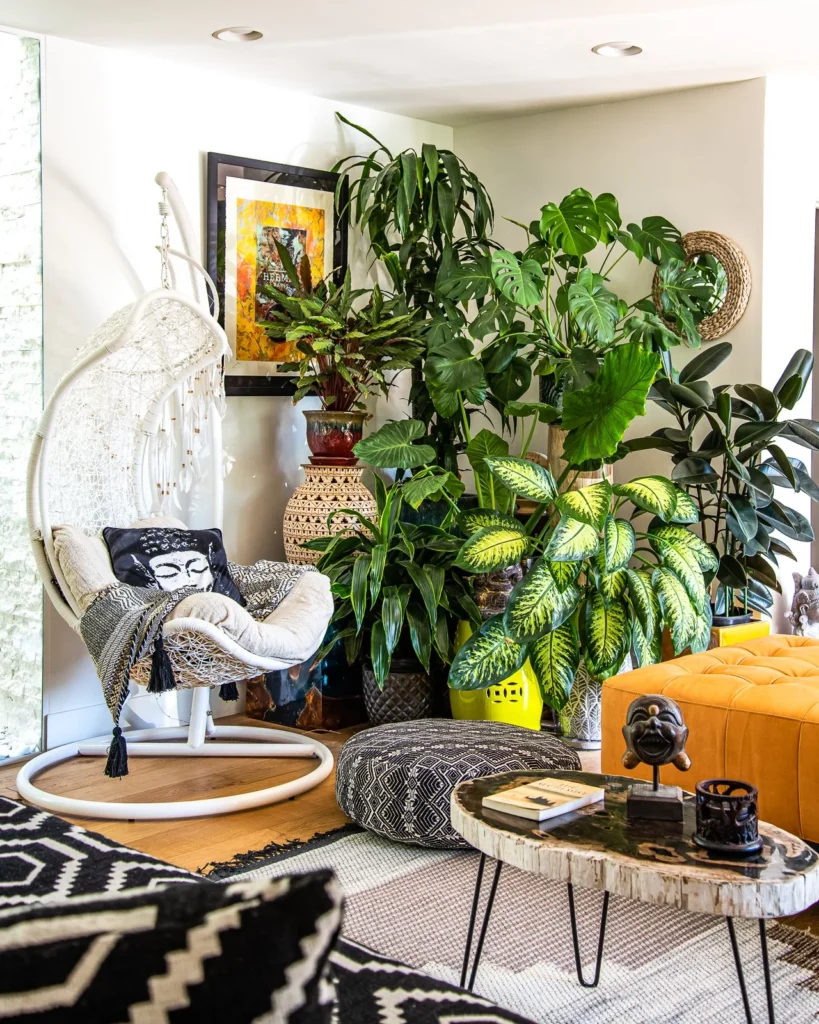
Source
Creating a dedicated indoor plant corner is a brilliant way to turn a small area into a lush green space. Whether you have a corner of your living room or a spot by your window, placing a variety of plants together creates a dramatic impact that feels like you’re bringing the outdoors inside.
For your corner garden, mix plants of different sizes, textures, and shapes to create a dynamic display. Use taller plants like rubber plants or palm trees as the focal point, and surround them with smaller plants like ferns or succulents. Vary the heights of the plants and incorporate different types of pots and containers to add depth and interest.
A plant corner can be a peaceful retreat within your home, providing a serene space where you can relax, meditate, or simply enjoy the beauty of nature. It also allows you to experiment with different plant species and care routines, giving you the freedom to create a personalized green sanctuary.
8. Plant-Filled Windowsills
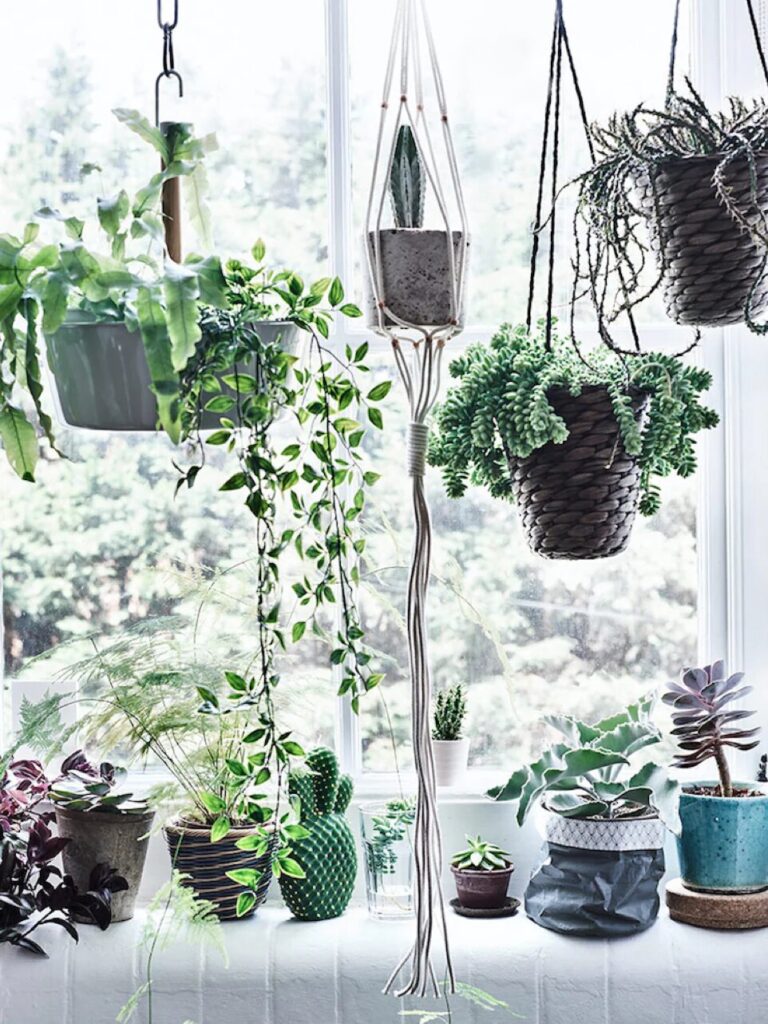
Source
Windowsills are often an overlooked space when it comes to interior design, but they can be the perfect place to showcase your favorite houseplants. By placing plants on your windowsill, you can take advantage of natural light, which many plants love.
Small plants like succulents, herbs, and cacti thrive in this environment, as they need plenty of light but don’t require a lot of space. Additionally, windowsills provide a great place for plants that need good drainage, like orchids and African violets. Consider placing your plants in decorative pots that match the aesthetic of your window trim or curtains.
Using your windowsill for plants not only enhances the natural light in your home but also creates a visually pleasing display of greenery right in your line of sight. It’s a simple and effective way to bring nature into your home without taking up too much space
9. Indoor Plant Walls for a Dramatic Green Statement
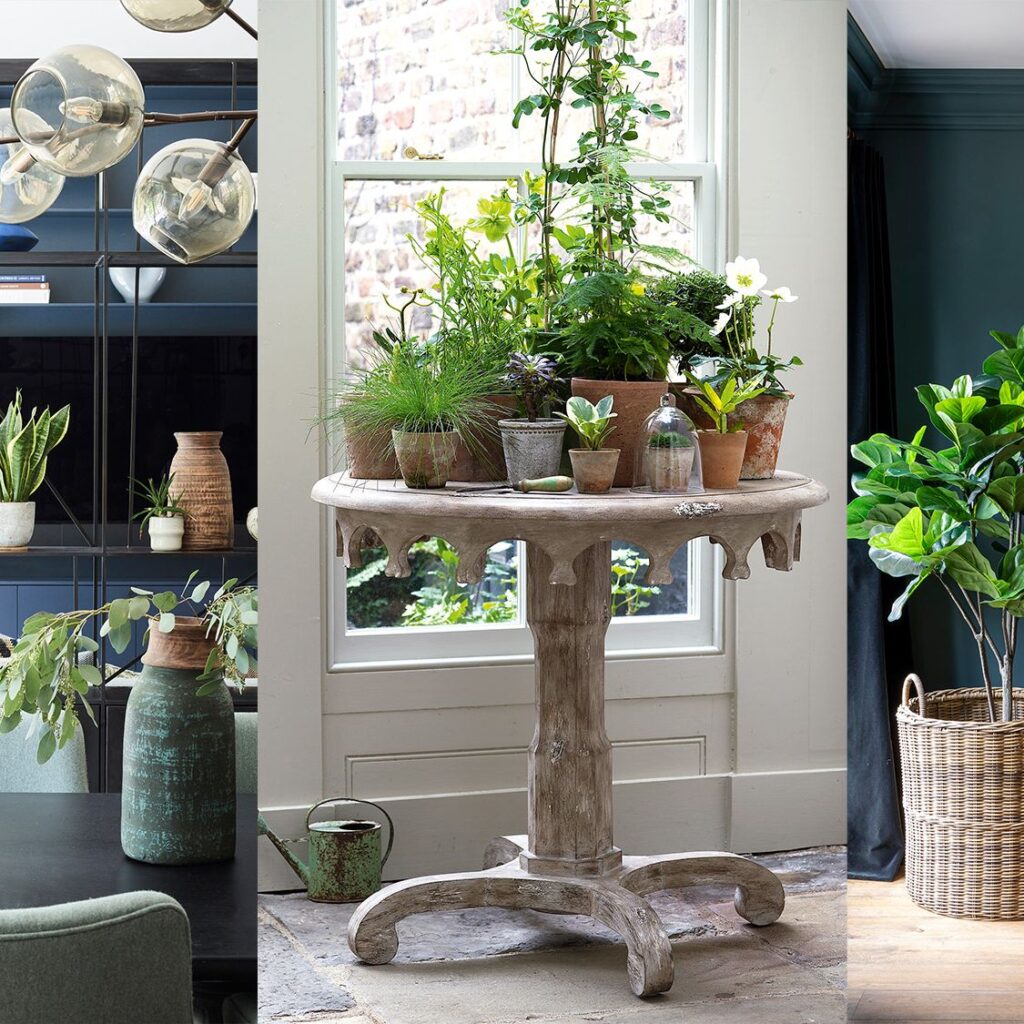
Source
An indoor plant wall is a striking way to create a living piece of art in your home. If you have a large empty wall or are looking for a way to add visual interest to a blank space, a plant wall can provide an eye-catching and eco-friendly solution.
To create a plant wall, consider using a vertical garden system, shelves, or hanging planters that allow you to arrange plants of different sizes and types. Plants like ferns, ivy, and succulents work well in these settings, as they can cascade down or grow upwards, depending on the setup. You can even use a variety of planters, such as sleek metal containers or rustic wooden boxes, to create a layered effect.
A plant wall can turn any room into a lush oasis, especially when placed in areas where you want to add some vibrancy, such as your living room, home office, or even the entryway. Not only will it act as a bold focal point, but it will also help purify the air and bring a touch of nature indoors.
10. Plants in Glass Containers for a Modern Look
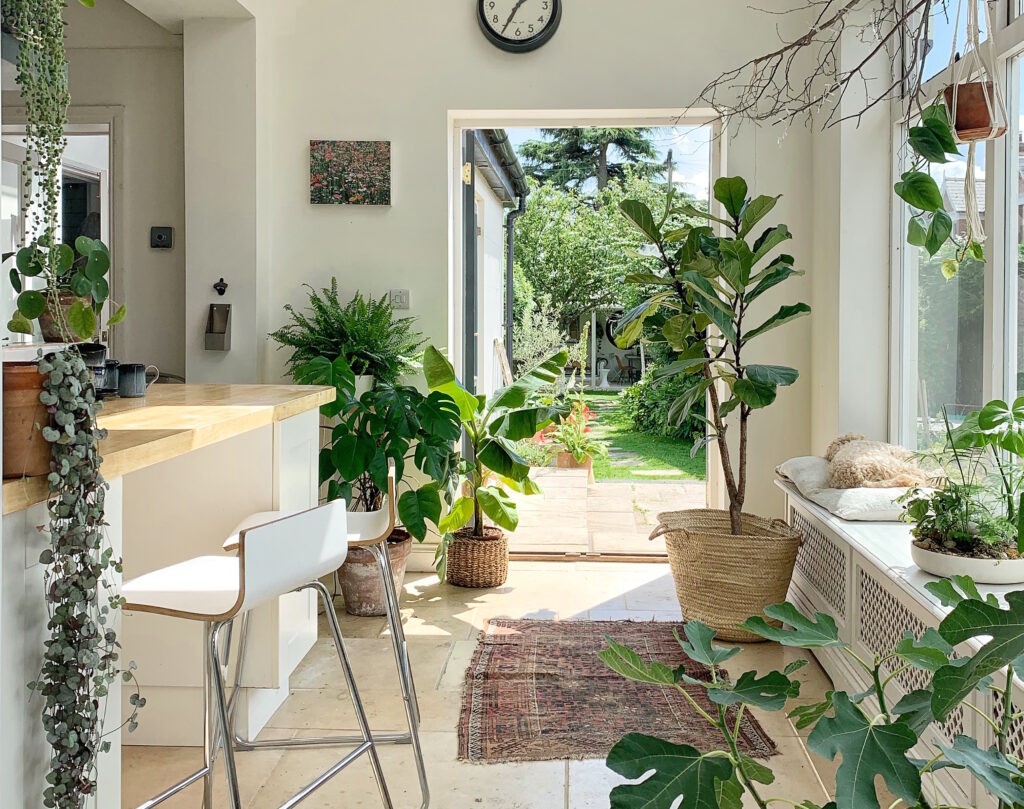
Source
For a sleek and contemporary style, try showcasing your plants in glass containers. This modern plant styling technique works especially well with small plants, such as succulents, air plants, or cacti. The transparent nature of the glass allows you to admire the plant and its roots, creating an intriguing visual effect.
Glass containers come in various forms, including terrariums, vases, and jars, which can add a clean and minimalist touch to any room. Terrariums are particularly great for creating a micro-ecosystem for plants that thrive in humid environments, such as ferns or moss. For an extra pop, you can fill the bottom of the container with decorative stones, sand, or pebbles.
The transparency of glass containers allows the plants to shine while adding a bit of modern elegance to your decor. These containers work well on shelves, mantels, or even coffee tables, providing a clean, stylish look with minimal maintenance.
11. Monochromatic Plant Groupings
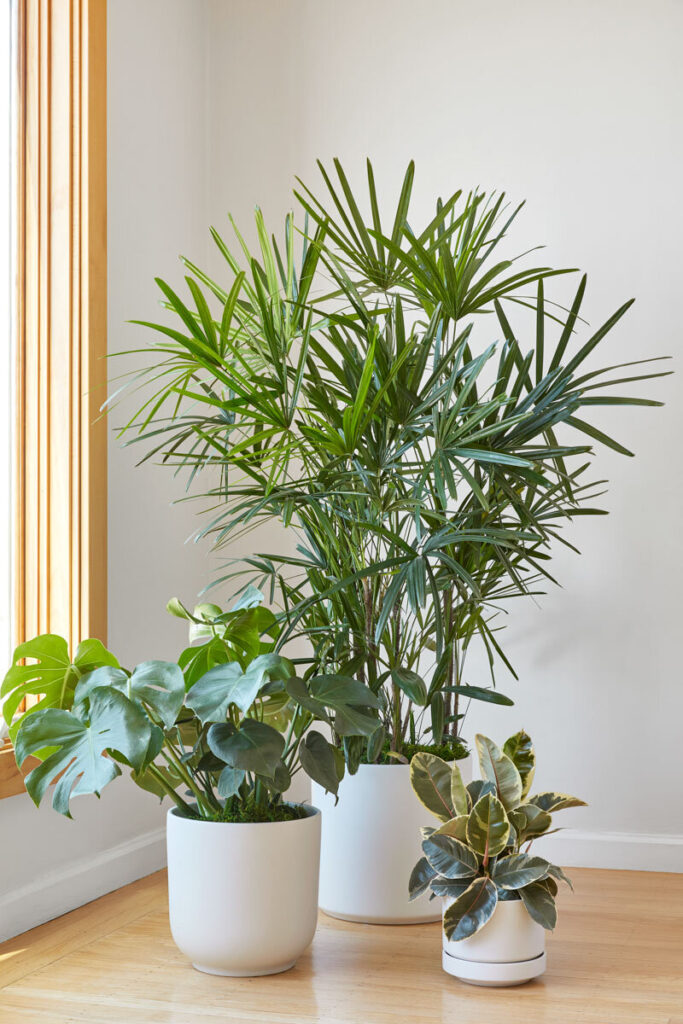
Source
For a sophisticated and cohesive look, consider grouping plants together by their color or foliage type. Monochromatic plant groupings involve selecting plants that have similar shades or tones, creating a unified display that brings harmony to your space.
For example, you could create a monochromatic collection of plants with dark green leaves, such as ferns, rubber plants, and snake plants. Or, you could select plants with variegated leaves for a slightly more textured look. This approach works especially well in modern or minimalist settings where the goal is to achieve a cohesive and calming environment.
By grouping plants with similar characteristics, you create a visually pleasing, intentional arrangement that complements the rest of your decor. It’s a simple yet effective way to incorporate more greenery into your home while maintaining a sense of unity and balance.
12. Retro-Inspired Plant Styling
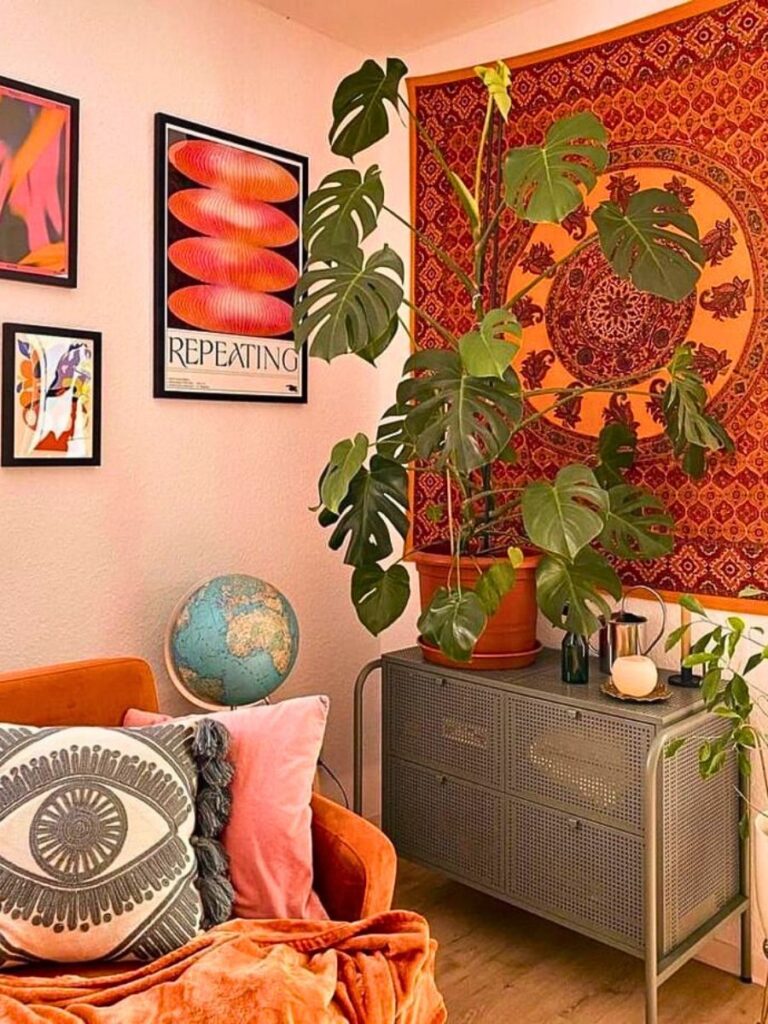
Source
If you love vintage or mid-century modern decor, retro-inspired plant styling is a great way to add a nostalgic touch to your space. Think of classic planters like fiberglass pots, macramé hangers, or colorful ceramic containers that were popular in the 1960s and 1970s.
Pairing retro-style pots with plants like the fiddle leaf fig, rubber tree, or spider plant will enhance the vintage vibe and create a unique contrast between old-school style and lush greenery. The key is to mix textures and materials—combining shiny, polished planters with earthy, textured plants adds depth and visual interest.
Retro-inspired plant styling can make any space feel warm, inviting, and full of character. Whether you’re decorating your living room, home office, or hallway, using this vintage approach can transform your home into a stylish haven filled with personality.
13. Minimalist Plant Arrangements
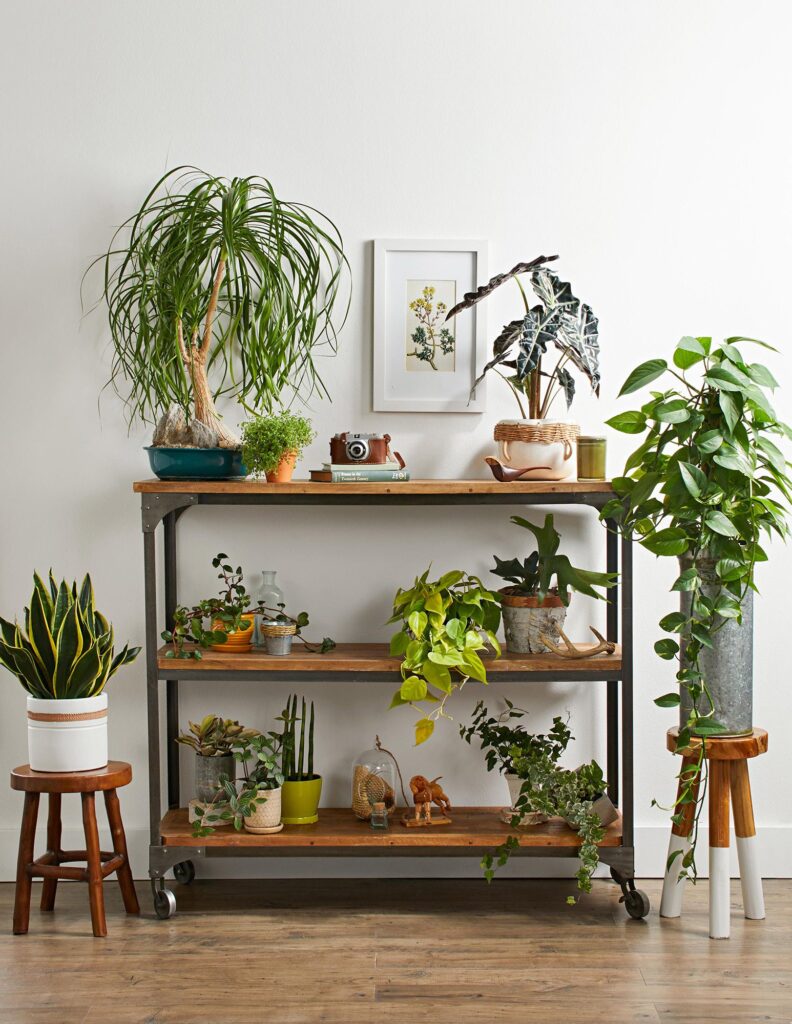
Source
Minimalist design is all about simplicity, clean lines, and decluttered spaces, and the same principles apply to indoor plant styling. If you love sleek, understated decor, minimalist plant arrangements are a perfect fit for your home.
Choose plants that have simple, architectural shapes, such as snake plants, ZZ plants, or aloe vera. Opt for modern planters with a neutral color palette—white, black, or grey planters work well in minimalist spaces. Keep the arrangement sparse to avoid overwhelming the room, and place your plants strategically to create clean visual lines.
Minimalist plant arrangements provide a calming, tranquil atmosphere and work beautifully in contemporary homes or smaller spaces where you want the focus to remain on the plants rather than the decor. These arrangements allow the natural beauty of the plants to speak for itself, creating a serene and peaceful environment.
14. Plant and Art Pairings
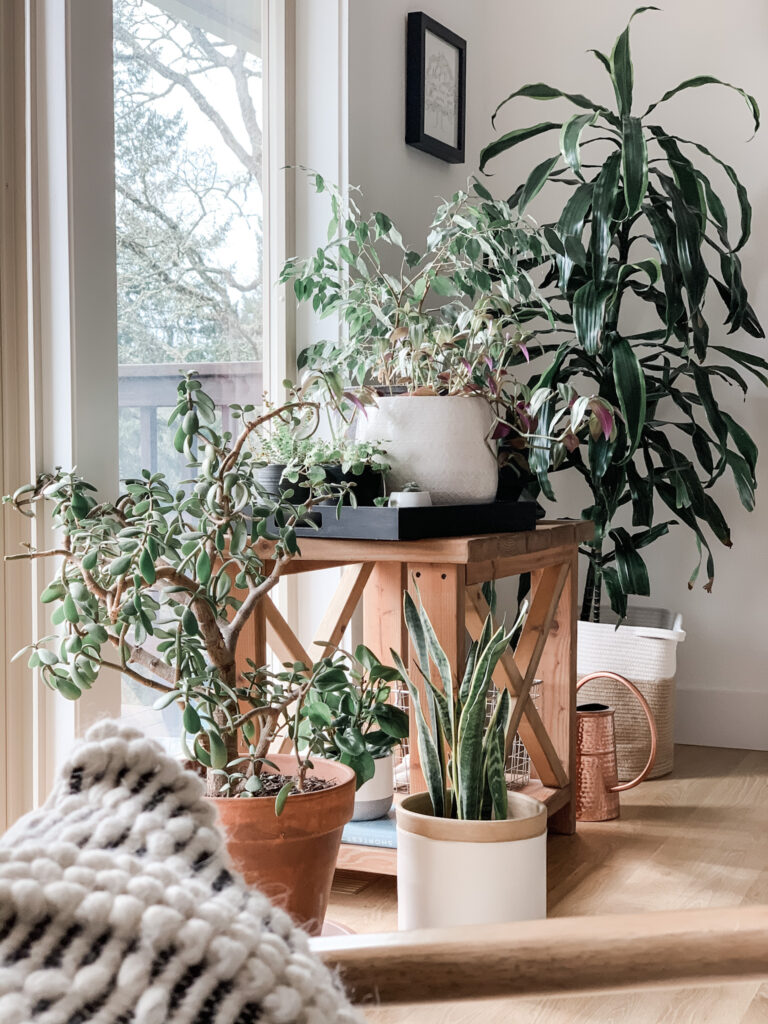
Source
Why not combine your love for plants and art by pairing your indoor plants with artistic elements? Plants can complement wall art, sculptures, or decorative accessories, creating a cohesive look that blends nature and creativity.
For instance, place a tall indoor plant like a palm tree next to a large abstract painting for a striking contrast between organic and geometric shapes. You could also display plants alongside sculptures or framed photographs that echo the colors or textures of your plants.
Pairing plants with art helps to tie the space together and create a harmonious, visually stimulating environment. Whether you’re styling a gallery wall, a mantel, or an entryway, this approach creates a dynamic combination that feels fresh and lively.
15. Layered Planters for Depth and Texture
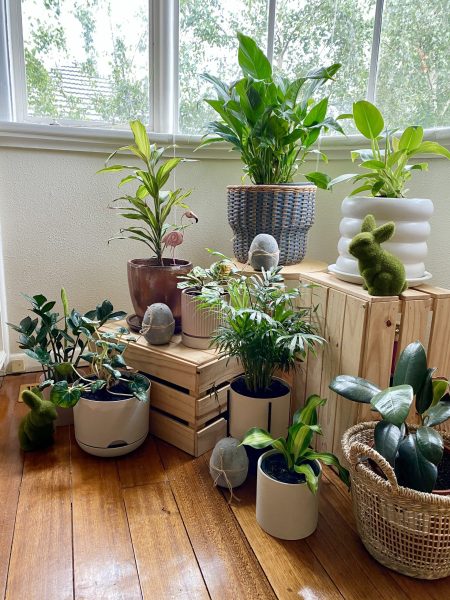
Source
Layered planters involve stacking or arranging multiple plants of varying heights and textures to create a rich, dynamic display. This technique works particularly well in large spaces or corners where you can create a more dramatic, organic arrangement.
To achieve this look, start with a tall plant, such as a fiddle leaf fig or bird of paradise, at the back, and gradually layer smaller plants in front. Add a variety of textures, from the smooth leaves of succulents to the more textured fronds of ferns, for a contrast in shape and color. Use planters in different sizes and materials to create a more eclectic and natural look.
Layering plants not only adds depth to your decor but also allows you to showcase a diverse range of plants, from those requiring less sunlight to those that thrive in brighter conditions. This technique can transform any corner of your home into a lush, multi-dimensional space.
Conclusion
Indoor plants are a wonderful way to enhance the style and ambiance of your home. Whether you’re looking to add greenery to a small space or create a bold statement with a plant wall, these 15 indoor plant styling ideas offer endless possibilities for making your space feel fresh and inviting. From hanging planters to minimalist arrangements, there’s a plant styling technique for every taste and room in your home. So, get creative, explore different plant varieties, and find the perfect way to incorporate plants into your living space for a touch of nature that will elevate your decor all year round.

